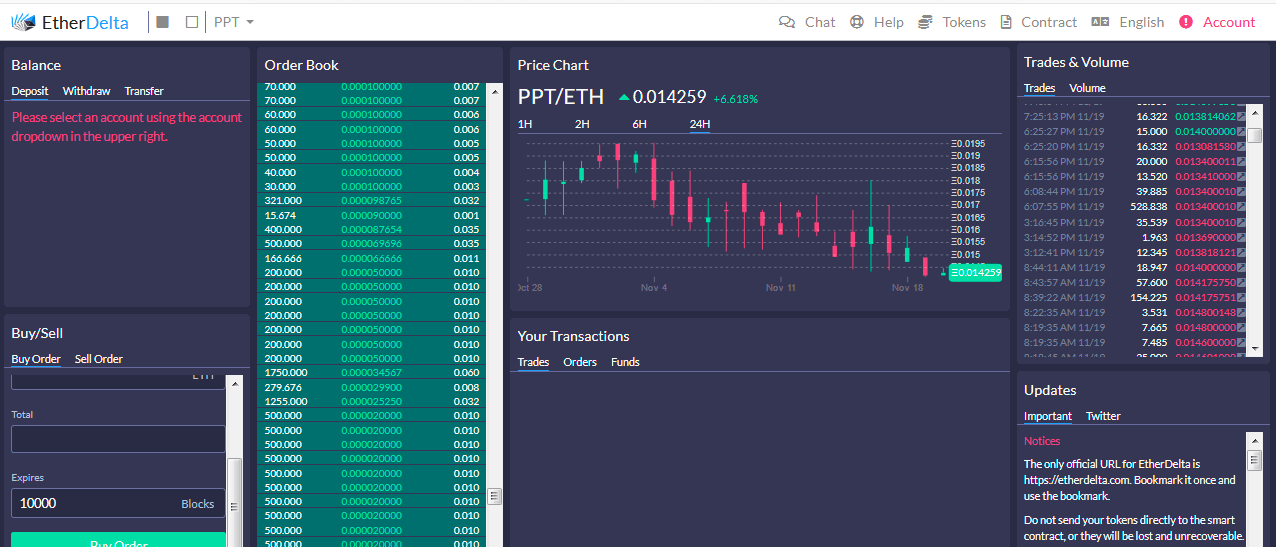With the launch of EtherDelta in 2016, now defunct, and MakerDao in 2017, Ethereum's smart contracting platform demonstrated the revolutionary potential of blockchain technology, particularly in the domain of decentralized open finance, now popularly known as DeFi.
At its height, Defi applications boasted a formidable $177 billion in TVL (Total Value Locked) compared to its currently not-too-shabby $47 billion.
The leading applications attracting significant liquidity today are, without exception, all part of the DeFi landscape.
The issue of slow blockchains, which can't process a high volume of transactions and often levy substantial fees during peak network traffic has been attempted be fixed by various solutions. For instance, projects like EOS sought to enhance scalability at the expense of decentralization. Meanwhile, likes of Cardano never delivers on its claims. Cosmos approached the problem with application specific blockchains that are interconnected through technology called IBC.
Emerging on the scene is a groundbreaking contender that's taking the 'application-specific blockchain' philosophy a step further by introducing the concept of 'sector-specific blockchain'. Enter the Sei blockchain, which sets its sights on becoming the speediest Layer 1 blockchain specifically designed for DeFi.
While I may not share the visionary perspective of my fellow crypto enthusiasts in discerning vast opportunities in the NFT space, I wholeheartedly see enormous potential within the realm of DeFi. Allow me to elaborate on this.
After a considerable military buildup on Ukraine's borders, Russia initiated an invasion on Ukraine on February 24, 2022. In the aftermath, the United States and its European allies imposed sanctions that encompassed freezing the Russian central bank's assets and restricting its access to vital financial infrastructure.
The United States has a longstanding history of using sanctions and embargoes, tracing back to the 1800s. However, the recent events concerning Russia have underscored the extensive reach of the U.S., demonstrating its ability to seize assets if provoked. This invasion has already led to thousands of casualties and is likely to continue causing harm. Use of U.S. sanctions has put other nations on edge, prompting them to explore alternatives such as BRICS currency. Although some view this as an indication of the U.S. dollar's waning status as the global reserve currency, I personally remain skeptical, as I believe the shift may be more attributable to a shortage of U.S. dollars rather than an actual destabilization of its reserve currency status.
A key takeaway from these circumstances is the inherent risk of censorship or sanctions associated with custodial assets. Two fundamental innovations of Bitcoin that stand out are its non-custodial nature and a predictable, non-politicized supply. This translates into cryptocurrency being an asset that can be acquired and retained independently without third-party.
Second, the financial system fundamentally operates on the basis of collateral. In 2014, the estimated volume of shadow banking was north of 70 trillion USD. This lack of knowledge regarding liquidity in the financial system underscores its opacity and lack of transparency, suggesting hidden risks lurking beneath while we're busy contemplating macro data like inflation, fund rates, retail sales, mortgage rate etc. By design, financial system operates on leverage, as seen in fractional reserve banking and repo markets. Such leverage demands collateral. However, due to the aforementioned lack of transparency, we are in the dark about the number of times these collaterals are rehypothecated or the actual extent of leverage in the system. Decentralized finance (Defi) could offer a solution by issuing transparent, censorship-resistant collaterals on the blockchain.
Given these factors, I cannot help feeling cautiously optimistic about a technology that is not only striving to disrupt the established financial order, but also aims to build a more efficient and transparent financial system.
Returning to Sei, it builds on Cosmos technology and introduces substantial improvements to Tendermint consensus algorithm. The result is the fastest blockchain currently in existence, certainly giving prominent projects like Solana a run for their money. SEI's unique version of the consensus engine is called Twin-Turbo consensus.
Innovation 1: Intelligent Block Propagation
Transaction hashes are transmitted without the transaction details. This speeds up the propagation process by letting validators retrieve transaction details. Validators look for the transaction details from the mempool.
Innovation 2: Optimistic Block Processing
This is excerpt from the whitepaper:
Rather than waiting until after the pre-commit step to begin transaction processing (figure 2a), validators will start a process concurrently to optimistically process the first block proposal they receive for any height (figure 2b). The optimistic block processing will write the candidate state to a cache.
Innovation 3: Parallelization
SEI holds the distinction of being the first Cosmos chain to implement parallelization. This innovative feature enables the simultaneous execution of multiple processes, resulting in improved scalability and overall performance for the SEI blockchain.
Innovation 4: Batch transaction
SEI introduces the concept of batch transactions, effectively mitigating frontrunning and protecting users from sandwich attacks commonly observed in Ethereum's DeFi ecosystem. By bundling multiple transactions together, SEI minimizes the chances of malicious actors taking advantage of transaction order manipulation, offering enhanced security and protection to users.
Innovation 5: On-chain order matching module.
SEI incorporates an on-chain order matching module, where the logic for matching orders is integrated directly into the protocol. This eliminates the need for relying on external order matching systems and ensures that order matching occurs within the blockchain itself. By implementing this feature, SEI enhances the efficiency and reliability of its trading ecosystem.
During the peak of the Luna spring, the Cosmos ecosystem boasted the second highest Total Value Locked (TVL) globally, second only to Ethereum. At that time, Terra had reached a TVL of 20 billion USD, surpassing other prominent blockchains like Polygon and Solana that had not attained such levels of TVL.
Sei founder Jay emphasized the battle-tested nature of Cosmos technology by pointing out the ability of Cosmos technology to perform well even during the Luna crash.
By leveraging Cosmos technology, Sei avoids the need to reinvent the wheel when it comes to essential components such as wallets, an explorer and most notably, Inter-Blockchain Communication (IBC). Sei's deliberate choice to utilize Cosmos technology instead of layer 2 solutions or Polkadot parachains shows the attractiveness of modular design of Cosmos Technology. This is further supported by DyDx's decision to transition from Ethereum-based solutions to the Cosmos SDK, highlighting the growing preference for the flexibility and capabilities offered with sovereign chains.
initially built on Terra, which are now establishing their own chains or launching on other Cosmos-based networks such as Osmosis and Sei. One noteworthy project exemplifying this trend is Levana, which stands for "leverage any asset." Levana is a perpetual exchange inspired by GMX and is set to launch on Juno, Osmosis, and Sei. Sei proves to be an ideal fit due to its dedicated focus on being the fastest blockchain specifically tailored for trading purposes. This alignment makes Sei an excellent choice for projects like Levana, enabling them to leverage Sei's performance-oriented infrastructure to deliver an exceptional trading experience.
Speed matters:
Speed indeed plays a crucial role in user adoption and satisfaction. While decentralization is highly valued within the crypto community, the average user may prioritize seamless and efficient experiences over decentralized ideals. In practical terms, individuals don't want to encounter delays when buying a coffee at a drive-through, where they expect near-instantaneous transactions. Similarly, discovering that they lack sufficient network tokens to complete a transaction, despite having enough stable coins, can be frustrating. These instances underscore the importance of fast transaction processing to ensure a smooth user experience and wider acceptance of blockchain-based solutions in everyday scenarios.
Solana has unequivocally demonstrated that a low-fee, fast, and secure monolithic blockchain can offer optimal composability and an exceptional user experience.
Perpetual trading is gaining momentum with projects like DyDx, GMX, Gains Network, Synthetix, and upcoming platforms like Levana and Perpetual Protocol. However, when it comes to speed and transaction fees, Drift Protocol on Solana stands out as the top contender.
Due to the reasons above, the decentralized wireless network project Helium transitioned to the Solana blockchain. Furthermore, the decentralized GPU rendering project Render is moving from Polygon to Solana. While Polygon and rollup chains tout their horns claiming to have solved the scalability issue, the reality is that they are fragmenting the community and diminishing the user experience with numerous perplexing bridges. This not only exposes users to more potential attack vectors - over a billion has been lost because of bridge hacks, but also complicates developer's life by necessitating multiple deployments across different blockchains.
Sei is aiming to be a FAST, scalable blockchain that is designed for trading applications. Being fast can be a great differentiator.
Less obvious observation is that Sei is enhancing Tendermint consensus in an open-source manner which can be utilized by other projects. I believe that Sei's improvement will draw more liquidity to cosmos chains and ultimately make other Cosmos chains more scalable and fast.
SEI has 439 thousand followers on Twitter and half a million members in its discord. Additionally, the project has attracted significant interest, as evidenced by the participation of around 2000 validators in its incentivized testnet. Undoubtedly, there is substantial hype surrounding the SEI project.
There are currently 14 campaigns on blocked for testing out projects building on Sei testnet.
https://edge.blocked.cc/products/1
Folks, myself included, have been frantically engaging in these activities with hopes of scoring an airdrop. Don't judge!
SEI has an ambassador programme called Atlantis - International Growth Program.
To unlock the perk of "upside in Sei tokens available," you must attain a level of at least Captain. While I'm uncertain about the precise meaning of "upside," it certainly sounds like something positive and potentially highly profitable.
You can read the details for yourself here:
https://3pgv.notion.site/Atlantis-International-Growth-Program-d9efed1b31994061b2833fe870c179fa
I have also found this article on Solana and Sei difference for those interested:
Here is Jay founder of SEI. I have enjoyed this interview. I am sure you will too:
In conclusion, it remains crucial to maintain a positive mindset and actively seek out innovative projects to participate in, even amid the uncertain macroeconomic climate we currently face.










